For those of you following the Amiga retro scene, you are probably familiar with the A1222 next generation Amiga, or at least the name of it.
Without diving too far into the past and get entangled in the Amiga drama once again (which I somehow seem to have a knack for doing, causing all kinds of problems), the CPU that everybody was talking about back in the late 80s and early 90s, was PowerPC (short: PPC). This was the cpu that finally gave Intel a good run for it’s money, at least for a decade or so. PPC was the buzzword on every technology experts mouth, and the hype was only rivaled by the spindoctors of Java. PPC could walk on water -the CPU that would solve everything.

Apple was an early adopter of the PPC cpu, having previously been dependent on 68k just like the Amiga. This was the time when Steve Jobs returned to “make Apple great again”, knocking out those fancy candy-mac’s, the mac G4 cube and well, the Mac machines that were exciting to be honest. Steve Jobs somehow found a way to make technology cool and attractive for people not generally into computing. The candy Mac’s and later G4 cube, was just as much a piece of designer furniture as it was a computing platform.
Even my mother that otherwise hated computers liked the candy Mac’s. That really says something about the power of advertizing and aesthetics.
Next generation Amiga
Around the same time the Amiga community was more than eager to abandon the 68k chipset. The old 68k was a beautiful piece of engineering, but it was ultimately technology developed in the 1970s. It was a CISC processor with a wast array of instructions, many of them complex and costly [in cpu terms]- which made it difficult for Motorola to ramp up the clock cycle speed. The 68k was a sturdy, faithful work-horse, but just like a horse cannot keep up with a car – it’s time in the sun had come to an end. The Amiga chipset being so dependent on how the cpu behaved, like gears in a finely tuned mechanism, would never make the transition. The entire 68k Amiga architecture was set to be phased out with the cpu.

In the Amiga community at the time there were some “hybrid” PPC solutions. Companies like Haage & Partner started knocking out PPC accelerator boards for the Amiga. You could then use replacement libraries (system libraries) which ran on the PPC cpu instead of the old 68k, boosting performance. Graphics performance was probably the aspect that benefited the most from this, although it would affect anything from database handling to sound processing for that matter – if someone had written the software to do so. But for a long time the PPC was regarded as “the next step”. There was no debate about this at all, since the PPC cpu was the only alternative that could give x86 a good run for it’s money.
Without getting into the nitty gritty of things, the culmination of the PPC / RISC development by various companies – competing or not, would eventually result in Hyperion implementing OS4. The legal battles over OS4 has been so insane, and so convoluted and complex, that I wont even bother to venture into it again. Needless to say, if the Amiga IP had been run by reasonable parties back then, we would all be sitting on next-generation Amigas running OS4 from the mid 90s well into the early 2k’s. But the Amiga IP was fragmented left and right, and people have been fighting over it for over 30 years. They are still in court over some of this stuff, which just boggles the mind.
The winner of all this will eventually be the proud owner of something that is worthless, because the technology will be so outdated that it would be equivalent to grabbing the rights to the model T-Ford in 2024. The only possible future I see for Amiga, is first of all my own Quartex Desktop system which is meant for clustering, Amiga OS 4 and finally, Morphos. Aros x86 actually holds the most promise, but without leadership and people paying bounties, it’s dead in the water. It is heartbreaking to watch.
The 3.x branches are dead unless someone magically invents a 68k CPU that delivers i7 performance. Which I very much doubt we will ever see.
30 years later
Whomever you might side with in the legal battles of yesteryear up until the present – Amiga OS4 has been fully developed by Hyperion Software, and is their product. What has happened however, as a consequence of all the legal delays over the years – is that the PPC launch that should have happened in the 90s, ended up being pushed forward into the 2k’s. Almost a decade was lost in the mayhem Commodore left behind. By then, the Amiga market was barely a shadow of what it once was.

Interestingly, in the past decade we have seen a sort of revival of the Amiga brand, as old time Amiga users are returning. Our kids are grown, we are in our 50s, and many of us are thinking about what we wanted to do as young men – versus what we had to do (e.g Job, family, careers). For most of us, the Amiga is associated with a time when the world was wide open; before we carved out a path and did our duty to nature and society.
As the kids grew into young adults, many of us found ourselves thinking about who we used to be, and what we loved doing before university, serious relationships and our careers became dominant. Just where did my Amiga go?
I think a lot of those that have returned to the scene in the past decade have experienced similar epiphanies in one way or another. Of good memories with the Amiga and a desire to re-live those memories. Or perhaps even picking up where we left off.
The way Commodore squandered the Amiga still doesn’t feel right. Like a book with missing chapters that deserves to be written.
PowerPC did arrive
With the mid 90s now over three decades behind us, you would imagine that the Amiga was just a distant memory, and that the next-generation never happened. But this is where people are wrong. Companies like Hyperion, which makes the OS4 software, and A-EON which makes the PPC Amiga motherboards – have not just released one such Amiga in our absence, but several models.
So the PPC / OS4 next-gen platform did go through, albeit a decade later than expected, but Hyperion etc. did deliver. Despite some parties best effort to prevent it i might add. There has been both the x1000 and (more recently) x5000, the Sam PPC boards – which all run Amiga OS 4.

The challenge has ultimately been that most Amiga users only remember the 68k line of machines, and completely missed out on the PPC platform. We grew up in the 80s, went to college and university in the 90s, and was firmly lodged in starting a family from the late 90s well into the 2k’s. My point here being, that most Amiga users dont feel an affinity to the PPC line of Amiga machines., they only remember the 68k classics. Which really is a great shame, because if Commodore had survived, we would all have done our college homework on PPC based Amiga machines, not x86 Wintel machines.
The A1222 was set for launch just before the Covid pandemic tragically hit us. Sadly the boards had some parts that were difficult to source, so A-Eon had to redesign the specs and write new drivers for the replacement parts. That the world went to a grinding halt with the Covid pandemic did not make things any easier. Two years out the window, followed by severe chip shortages, delayed production and crippled supply lines. Everything became more expensive (and still is), from bread at the bakery to the cost of a Raspberry Pi.
But lo and behold, the A1222+ has finally arrived!
Strange reception
One of the things I always find baffling about the Amiga community, is how blatantly tribal it is. And for no real reason. You would imagine that a community with roots all the way back in 1985 (older even if you include the PET and C64), would be thrilled to receive new hardware in 2024. It is honestly nothing short of a miracle that companies still exist that is investing in Amiga after all this time. But like I mentioned above, most Amiga fans only remembers the 68k machines, and thus regard the OS4 machines with some strange, tribal hostility.
It makes no sense, really. And the arguments are always the same: “It’s not a real Amiga!”. But what exactly constitutes a “real” Amiga? Is it the blitter chip? The sound chip perhaps? The CPU? If we start taking away chips from a classic 68k motherboard, at which point does it stop being an Amiga? And likewise, if we add new hardware to it – when exactly is it not an Amiga any more?

I find it so strange that the people who have no problem stuffing 2-3 Raspberry PI’s into their Amiga machines, to the point where these ARM computers are doing all the work, still have the balls to say that a PPC Amiga is not a real Amiga.
Keep in mind that, had Commodore by some miracle given Dave Haynie and the engineers the resources they needed, the next generation Amiga would have been PPC based, with a PA-RISC based graphics chipset (where the PA-Risc would be equivalent to cuda runnjng shader code on a modern GPU). We would all have spent our college days using a PPC machine. There would be nothing about those Amiga’s that you could point to and say “there, that makes it an Amiga“.
Except for one thing. Workbench.
What we are left with is the OS. The methodology of how we interact and work with an Amiga system. As a developer I spent 90% of my Amiga days on Workbench. Either in Hi-Soft HiSpeed Pascal, BlitzBasic, Asm One or Storm-C. Sure, I loved to bang the hardware directly, but towards the late 80s the hardware was so out of date that you literally had to count clock-cycle cost per instruction to get good results. Even a cheap 486 dx2 was lightyears ahead of Amiga back then.
So what constitutes a real Amiga? Well, it’s subjective. I can understand that non-developers would put all the onus on the hardware, the physical machine — but as brilliant as that hardware was in the mid 80s, it was ultimately the OS that made the Amiga such a hit. If the Amiga had come out as a console in 1985 (which it was originally designed for), with no means to write software for it yourself, it would be understandable that people would cling to the chipset and architecture. But what made the Amiga such a kick-ass system, was that it delivered a better desktop experience than Windows and MacOS, at a fraction of the cost. It gave all of us the means to become programmers, graphics artists and music makers. And what binds it all together, is Amiga OS.
Amiga OS 4 is compatible with the 3.x kernel (has the same functions and behavior, obviously with new and more modern aspects), so it is by definition an Amiga.
The sort of strange, tribal, soccer hooligan affinity for the 68k is laughable. It really is. There is no next-gen 68k except Vampire, and no amount of CPU emulation or using ARM to run it will help. Not unless you start plugging in hardcore SoC’s like the Rock PI 5 or SnapDragon CPU’s which would deliver i5 performance. But is it then an Amiga? Or a frankenstein machine?
i love frankenstein machines, but to stuff a classic full of ARM computers to do the heavy lifting, and then have an attitude about PPC is hypocrisy of the worst kind. Especially when people become toxic over it.
Get me some PPC
Since the A1222+ has finally arrived I have put in an order for it. Yes, I will be getting the A1222+. And yes it did end up costing almost twice as much as it was said to cost. It was initially meant as a low-cost entry, kinda like the A600 was supposed to be for the A1200 back in the day — but due to chip shortages, the endless legal idiocy of Cloanto and so fourth – price increases globally in every market, it ended up costing more.
But keep in mind, this machine is more or less hand sculpted. It is not made in it’s hundred’s of thousands, but rather in batches of hundreds. If those sell well, there will no doubt be more made. I for one am thrilled to get one, despite the extra cost.
Is it perfect? Probably not. There are bound to be bugs, inconsistencies, flaws – all the common elements of products made by a small but dedicated team of developers.
The only thing that could change that, was if people stopped being so fucking narrow minded and actually invest in OS4. You want an ARM version? Well maybe if the A1222+ sells well they might consider that for the future, but there has to be support for what exists today first. The endless drama in Amiga circles about never getting enough innovation has become the cries of a pampered, spoiled brat.
Just when exactly will there be enough? When will the general Amiga fan, returning or not, be satisfied enough to put more than $400 into actual new hardware? Why should Amiga be dirt cheap when we are fine with a moderate i7 gaming PC starting at $1200? Buying a second hand A1200 today, gettjng it recapped, add a piStorm, put it inside Stephen Jones wonderful desktop case, add shipping and taxes -and you have already surpassed what the A1222 costs (pre-assembled and ready to use).
- We have the best damn emulation on the planet, rivaled only by massive companies like VMWare. No other retro system on the planet has such an evolved emulation scene as the Amiga. WinUAE got the Amiga down to the last cpu cyce for pete sake.
- We have FPGA’s that make other legacy platform owners blush in jelousy, from Vampire V4SA to MiSTer clones galore. But bu-hu they cost more than a Raspberry PI, so people bitch about it non-stop.
- We have Aros for x86, which for some reason people barely bothers to use, let alone donate money for — despite it being a damn near replica of the original OS. If more people paid bounties for it, we would have enough drivers to run Aros on modern computers today, UEFI including which means buying a fucking certificate and signing the frikken bootloader. This isnt rocket science, it’s modern software development.
- We have cloud based Amiga systems, like the Quartex Desktop and development tools which is set to be launched this year. This allows you to daisy chain together computers to share the payload (clustering). And it comes with modern development tools akin to Visual Studio or Delphi to enable you to write modern, object oriented software. It compiles to JS (WASM is planned), which is means your apps can run ANYWHERE regardless of platform.
- We have the mini remake computers, like Amiga mini and soon, the Amiga Maxi. This will no doubt set you back $500-$600, but somehow that seems OK for most people. Despite the fact that you could just put a raspberry PI 4 inside an A1200 case and wire it up with Keyrah and achieve the exact same result.
- We have Morphos that, just like OS4, is a re-implementation of Amiga OS. Except Morphos runs on obsolete, cheap PPC Mac’s which you can pick up for less than $100 in most cases. A spectacular Amiga experience that is seeing a ton of development, with new applications coming out all the time.
- We have PiStorm that allows you to fit a Raspberry PI and use that as a cheap accelerator, blowing everything out of the water in terms of performance (compared to the old, and costly, 040 and 060 accelerators).
What do these things have in common? They are all rejected by various factions in the Amiga community. It really is the dumbest thing you can possibly imagine, especially when you realize how little other retro communities have to play with. So, the people that love FPGA usually hates emulation. The people that love classic hardware tends to hate both FPGA and emulation. The people that love the PiStorm usually thrash talk the vampire … it is like an insane asylum.
You wanted the 68k branch to be evolved, voila – you got the Vampire. Not only did it evolve the instruction set, it also introduced new display modes, better sound, more sprites, faster blitter, new libraries — all while remaining largely compatible with legacy software (!) I mean, talk about a monumental achivement in engineering! As I type Apollo is re-engineering Aros to make full use of their new CPU instructions (read: run like hell), so we are finally getting away from the Cloanto choke-hold on the ROM kernel.
Then people wanted a better, more updated operating system (read: OS4), but hated the fact that you needed full priced PPC hardware. Well you can pick up a used PPC mac for under $100 and install Morphos. It is just as evolved as OS4, more or less — but then the arguments circle back to “Mac is not an Amiga“. No shit sherlock! Neither is stuffing 2-3 Raspberry PI’s inside your Amiga. The only thing Amiga about some of the souped up classics out there, is that it draws power via the original powersupply (!). The rest is ARM.
It’s too expensive!
Is it though? Is it really? It costs twice as much as a MiSTer ultimate box, which limits you to a 68020 @ 50Mhz + RTG experience. Sure, the MiSTer can also do SNES, Megadrive and the old consoles — but what does that have to do with Workbench and enjoying a modern Amiga?
Have you seen what a tricked out A3k sells for on eBay? Aparently people have no problem forking out $2000 – $3000 for a 30 year old computer with crusty trace-lines, failing parts, vintage capacitors that belong in a museum, and maybe 4-5 repair guys between california and stockholm combined. A computer that you cannot do anything modern with, so you would be better off getting that Raspberry PI after all.

The A1222+ can run 68k RTG software side by side with PPC software, it can run legacy games and hardware bound software via built-in emulation, and you get access to the plethora of PPC titles and ports of modern software in the process.
Ask yourself this: if the OS4 machines are so bad, why are they never on sale? Why is not ebay, finn and other second hand websites chock full of old x1000’s and Sam460 machines? Why do the few that turn up on rare occasions get sold within 24 hours? In the past 15 years I have only seen one locally on finn (Norwegian ebay like site) and it sold literally over night.
The A1200+ is produced in small numbers to mitigate loss. They are hand sculpted if you will, custom made, and are thus a work of art. So if you want to experience the last chapter in the Amiga saga — why not go for it? That car downpayment is not going anywhere, put it on pause for a month or two and join the OS4 community. You already know the classics, you know it was a dead end, so why not jump straight to the final chapter and experience a machine and software that is much, much closer to modern. A machine that has swapfile support (virtual memory), that has modern compilers, that has games you never got to try, and that also let’s you enjoy the older, 68k titles whenever you like?
I own both the V4SA, The MiSTer ultimate, classic amiga machines, Raspberry PI emulation, RPI laptop that boots into workbench, Aros x86 boces and several Mac’s running Morphos. There is a limit to how many times you can play Defender of the Crown and Superfrog before you wish to try something a bit newer — and the A1222+ allows you to unify all if it into a single box.
When Quartex Media Desktop comes out, you can recycle those Raspberry PI’s you have floating around the place and build a nice cluster with them instead 🙂

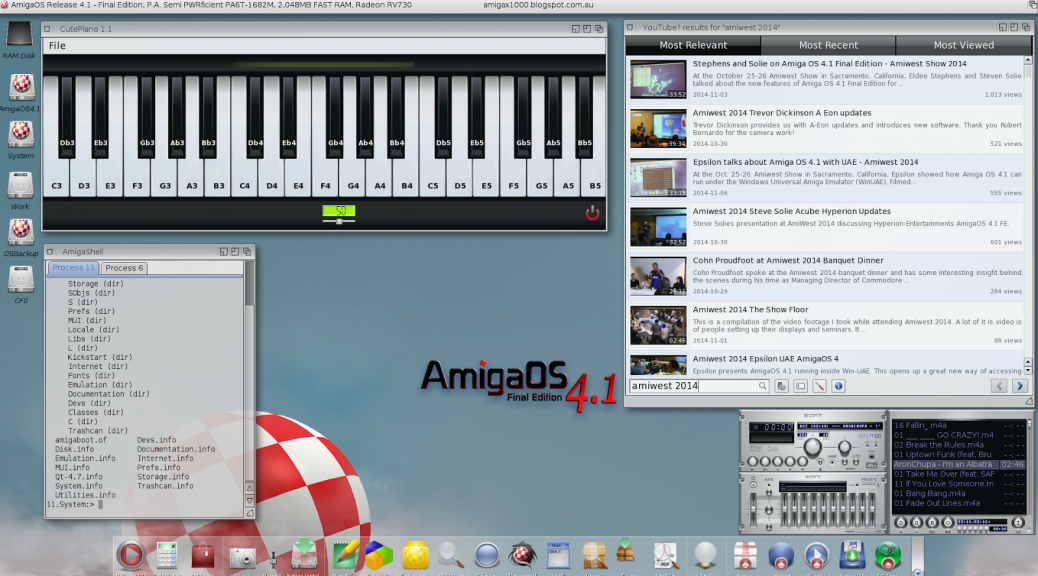





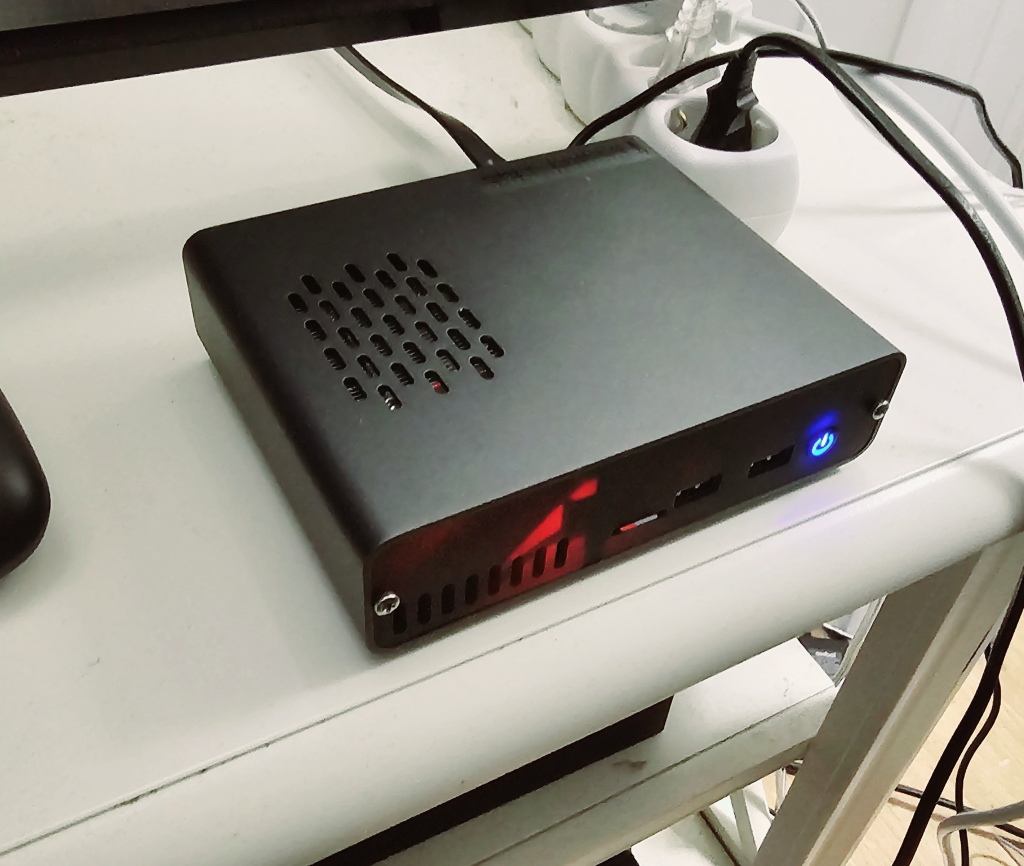


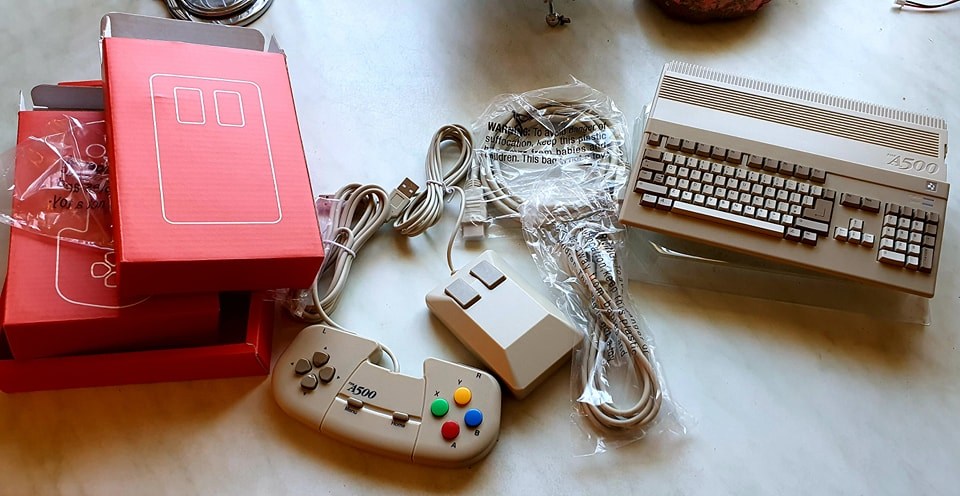






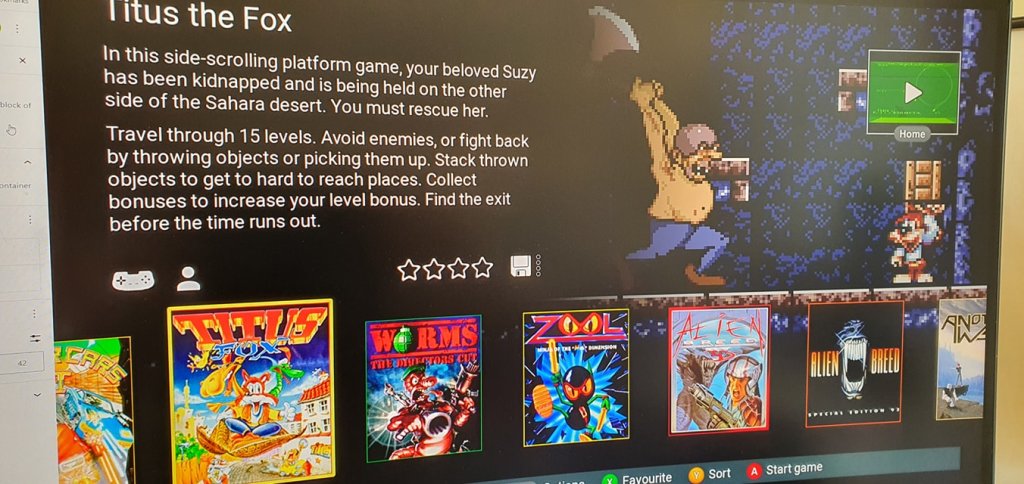

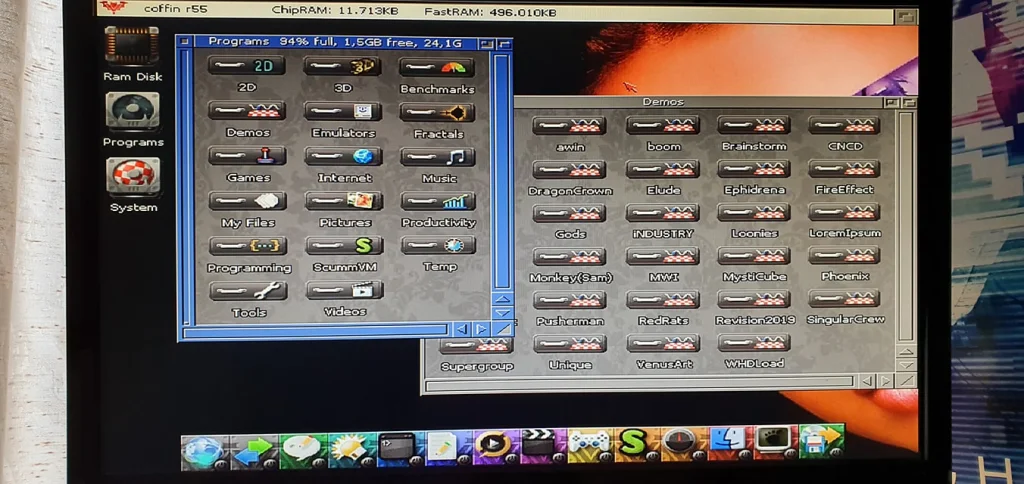




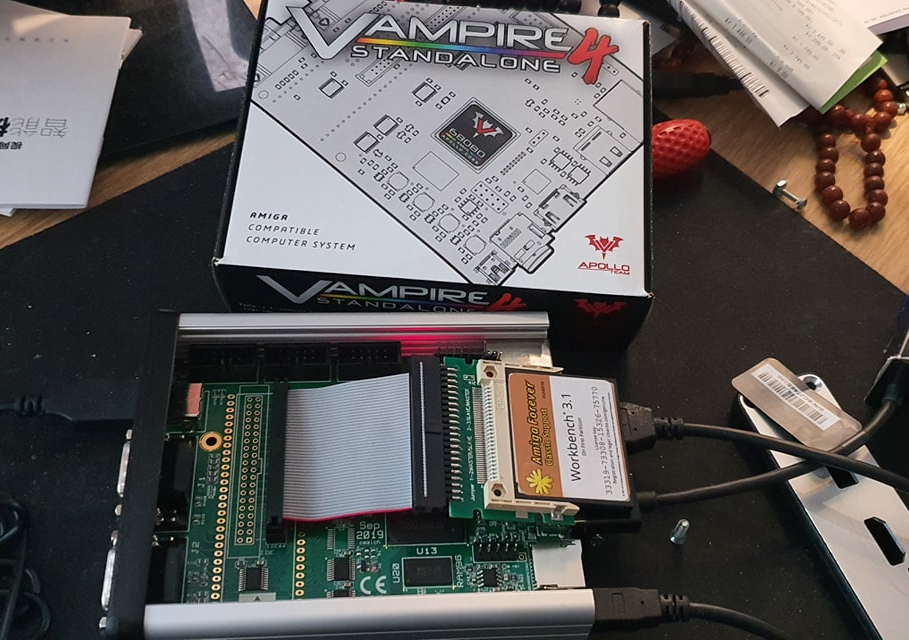
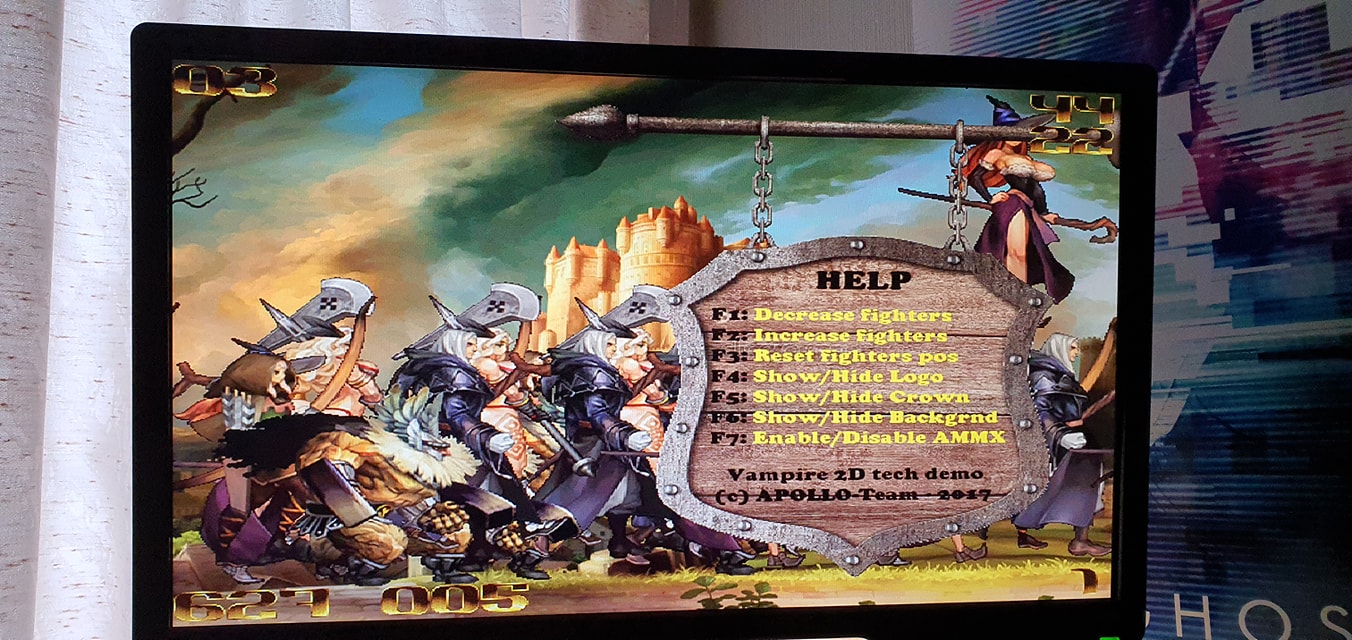
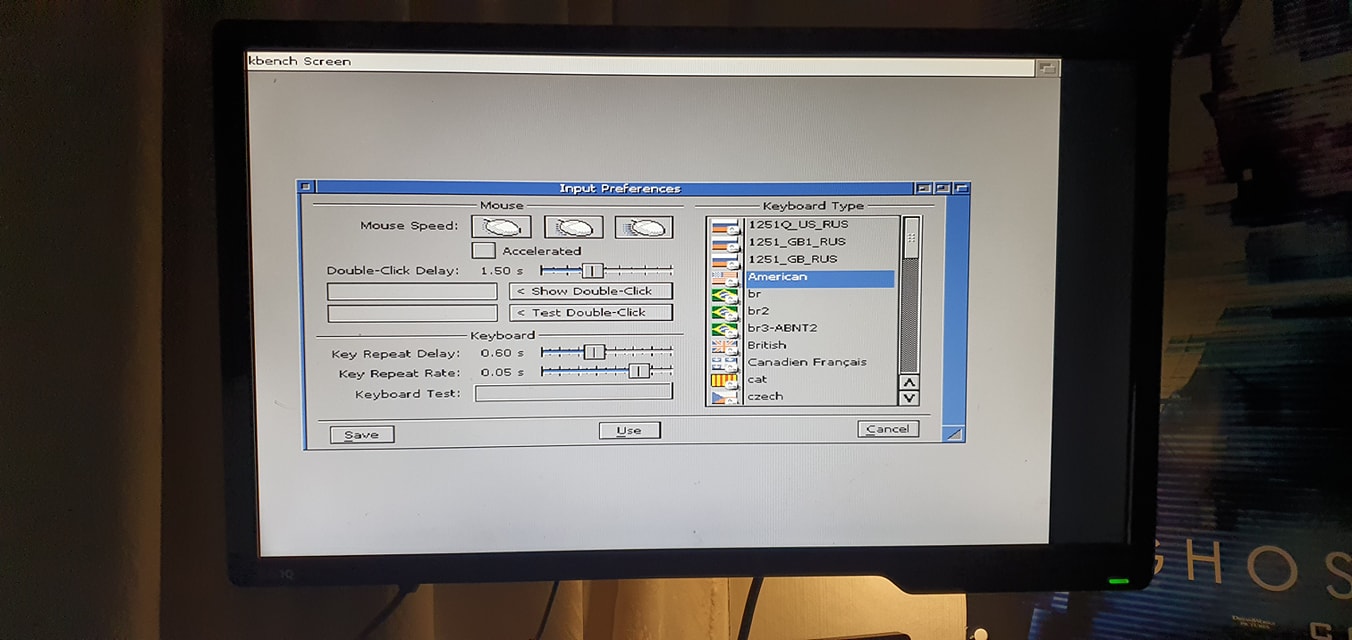
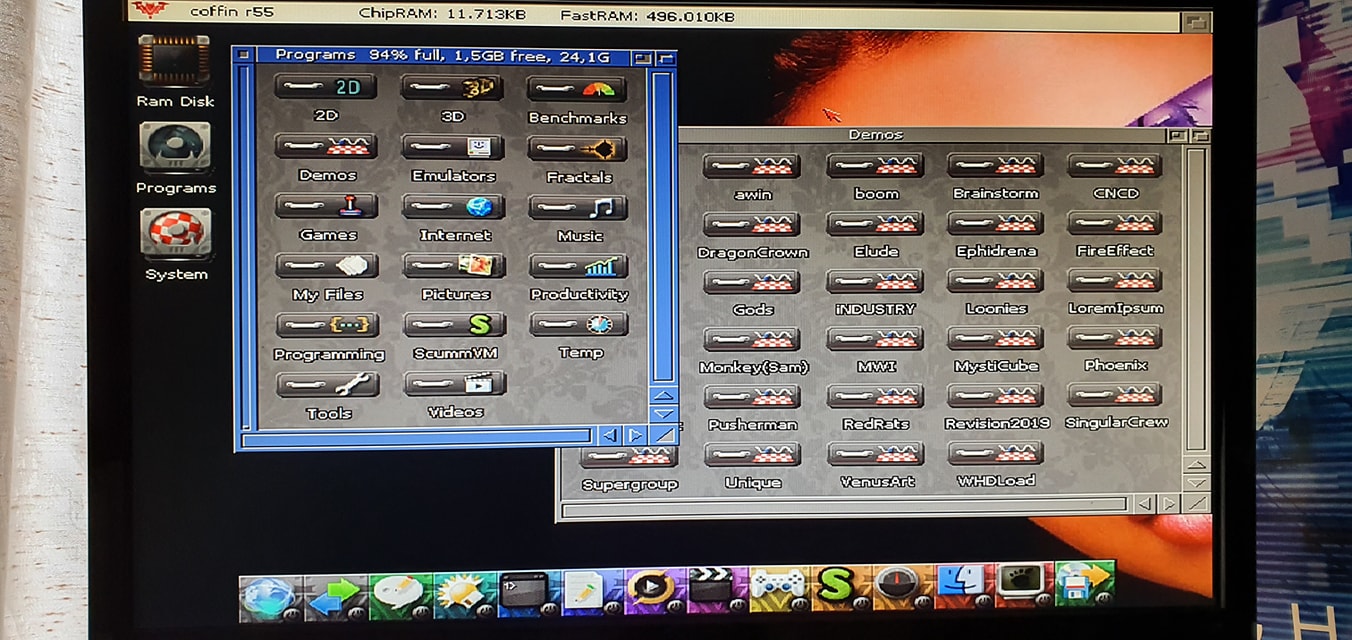
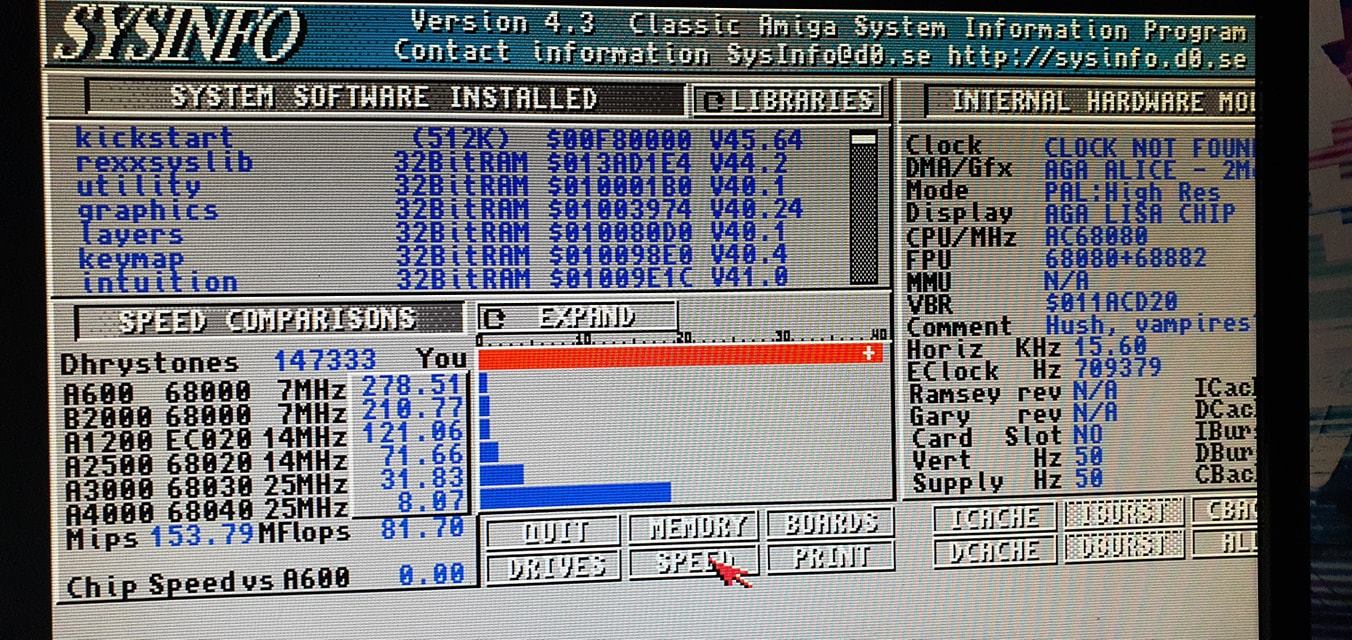

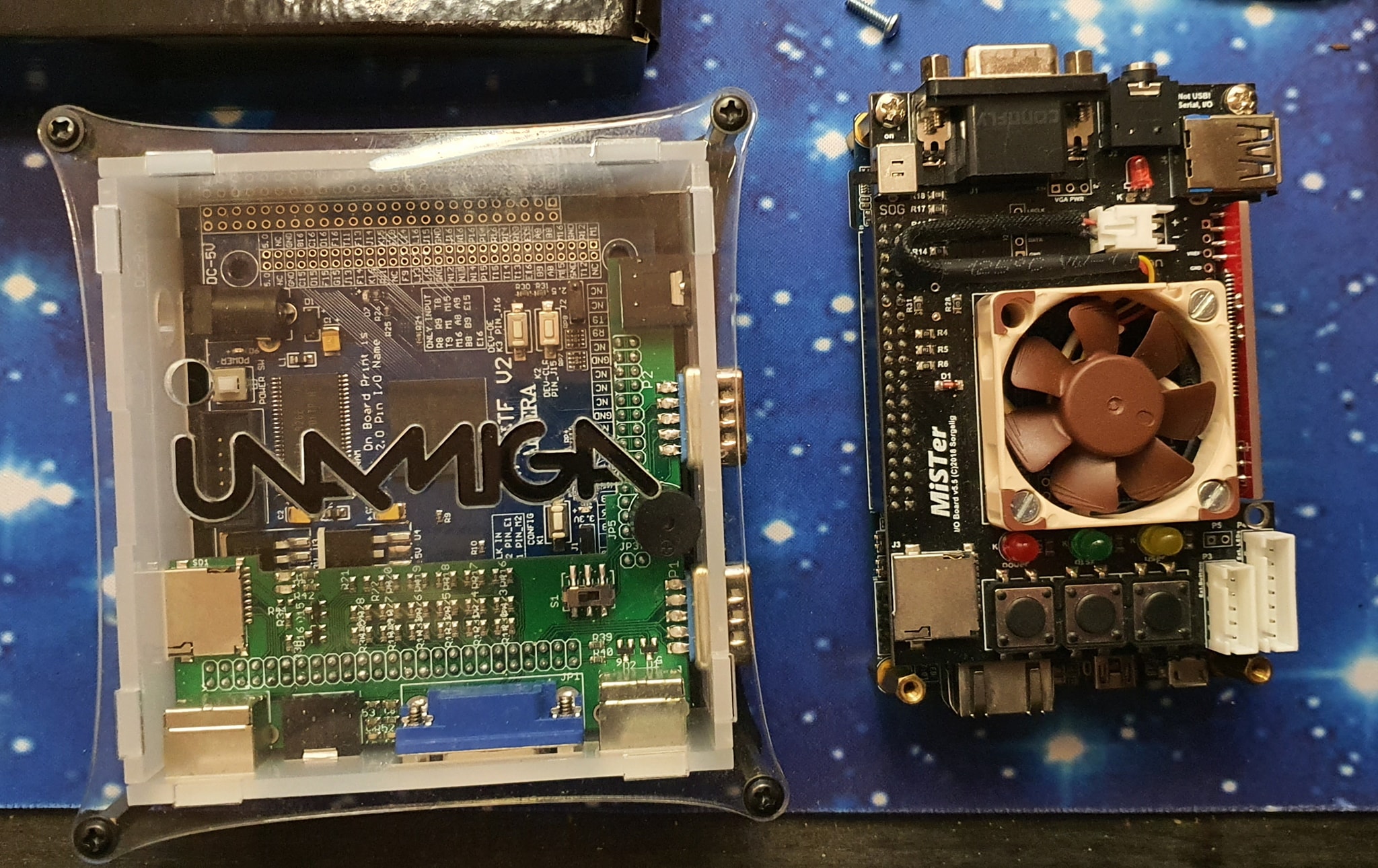
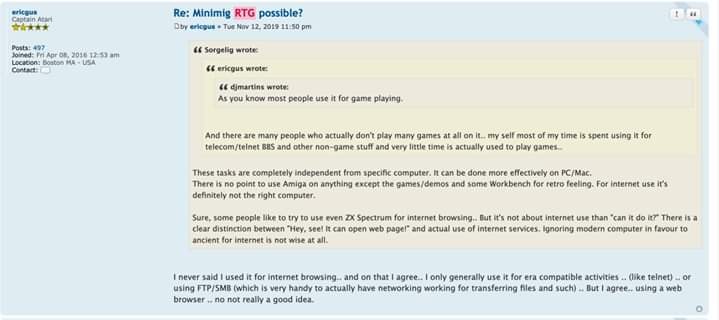
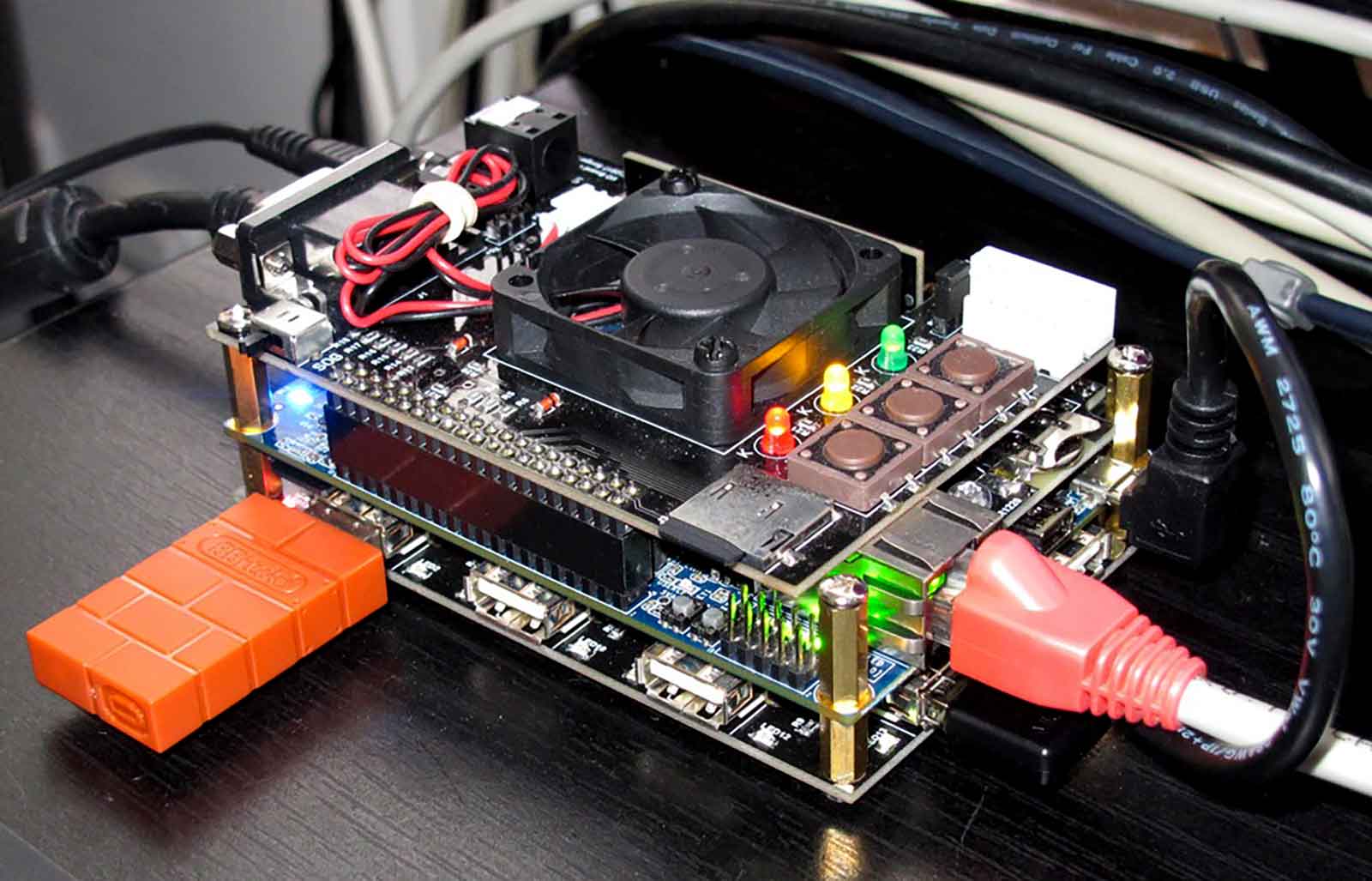




You must be logged in to post a comment.